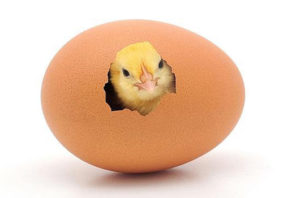In addition to the breeding of chicks, the environment of all aspects of the house should be appropriate. For example, high quality chicken battery cages, reasonable temperature, proper humidity, fresh air, reasonable density and proper illumination will have an impact on the growth of the chicks, so the farmers should also carefully manage the environment. The author summarizes the reasonable management of temperature, humidity, density, etc., and now share it with farmers.
1. Appropriate temperature: The temperature of the brooding is related to the success of the chicken. The temperature of the brooding includes the temperature of the brooding room and the brooder. The room temperature is lower than the temperature of the brooder, forming a certain temperature difference. One air circulates, and the second chicks are free to find the temperature they need. Because the chicks are very sensitive to temperature, if the temperature of the chicks is below 3 °C, the metabolism of the chicks is blocked, and the residual yolk in the body is poorly absorbed. The body is trembling, the body heat is consumed a lot, and each other is crowded and warmed, which makes it difficult to start eating. When the temperature is mastered, it depends on the performance of the chicks and the temperature changes of the chicks. Generally, the cold weather at night is 1-2 °C higher than the normal daytime, and the temperature of the weak chicks should be higher. Moreover, to prevent the temperature from rising and falling, it is better to be as stable as possible.

2. Appropriate humidity: Although the humidity requirements of chicks are not as strict as temperature, they can also cause damage to chicks under certain conditions or interaction with other factors. In the early stage of brooding (1 to 10 days old), due to the high temperature of brooding, the chicks have small feed intake, less bowel movements, and relatively dry environment. The chicks lose more water through breathing and body surface, so that the yolk in the abdomen is poorly absorbed. Dry skin, feathers, slow growth, dry toes, even dehydration, weakness and death. Therefore, the relative humidity in the early stage of brooding should be larger, generally maintained at 65%-70%. The hotter the summer, the colder the winter. According to this principle, chickens should pay attention to controlling the humidity in the brooding room.
3. Fresh air: young chicks grow rapidly and have strong metabolism. In addition, they are densely reared, large in size, and the carbon dioxide emitted by breathing, feces and polluted grasses emit harmful gases, which make the air dirty and unfavorable for chick growth and development. Therefore, it is necessary to ventilate and adjust the temperature and humidity in the house. The carbon dioxide in the brooding room should be adjusted below 0.2%.
4. Reasonable density: Density refers to the number of chicks accommodated per square meter of area. Density is closely related to the growth and development of chicks and health. The density is too large, the chickens are crowded, the heat is easy to eat, the food is uneven, the chicks grow slowly, the development is not neat, they squeeze each other, polluting each other, and easily infecting diseases. And it is prone to sputum and increase death. Therefore, chicks should be arranged flexibly according to the characteristics of the house structure, ventilation and feeding management conditions, and seasonal temperature. In the case of good feeding and management conditions, the density in winter can be slightly larger, and the summer can be relatively small, with a difference of 10%.
5. Correct illumination: Light can promote chicks to eat, drink, increase exercise, promote muscle and bone growth, prevent disease, improve future production performance, and should give reasonable illumination from the beginning of young chicks. The young chicks that have just emerged from the shell generally use 23 or 24 hours of light, and the suitable intensity is 10.76 lux, that is, 0.37 square meters has a light source of 1 watt, after the fourth day, 1 watt per square meter, and after the second week, 0.5 watt per square meter. At night, the light can be stopped for an hour at an irregular time to exercise the dark adaptation ability of the chicks, to avoid the blackout caused by the power outage, and to shape the chicks to sleep to ensure the normal development of the chickens. Turning on the lights at night can prevent the thunder caused by rodents. Summer and autumn to prevent mosquito bites.
Farmers must pay attention to the above points when using poultry farming equipment to raise chickens. In particular, the density of breeding, many farmers in order to raise more chicken, and stocking too many chickens in the poultry battery cages, the result is counterproductive.